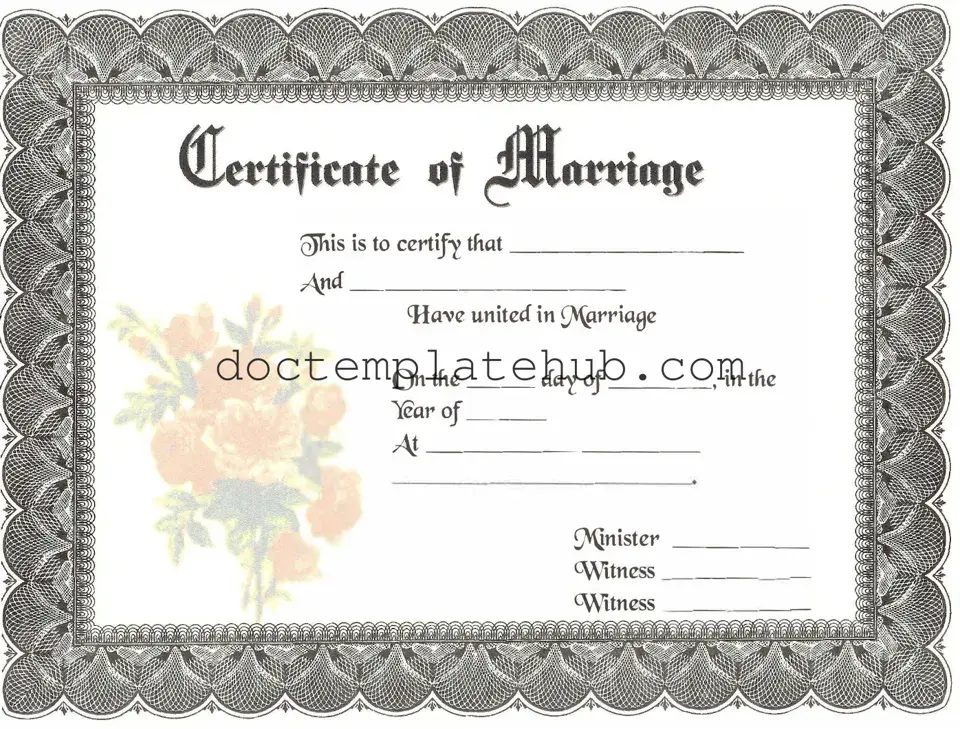What is a marriage certificate?
A marriage certificate is an official document that verifies the union between two individuals. It is typically issued by a government authority and includes essential details such as the names of the couple, the date of the marriage, and the location where the marriage took place. This document serves as legal proof of the marriage and may be required for various purposes, including name changes, insurance benefits, and legal matters.
How do I obtain a marriage certificate?
To obtain a marriage certificate, you generally need to apply through the office of vital records or the county clerk in the area where the marriage occurred. The application process may vary by state or county, so it is advisable to check the specific requirements for your location. Typically, you will need to provide identification, complete an application form, and pay a fee.
Do I need to be married to request a marriage certificate?
No, you do not need to be married to request a copy of a marriage certificate. However, you may need to provide proof of your relationship to the individuals named on the certificate, especially if you are requesting it for someone else. Some jurisdictions may have restrictions on who can obtain a marriage certificate, so it is important to review local regulations.
What information is typically included on a marriage certificate?
A marriage certificate usually contains the full names of both spouses, the date of the marriage, the location where the marriage took place, and the signatures of witnesses or officiants. Some certificates may also include additional details, such as the marriage license number and the names of the parents of the couple.
How long does it take to receive a marriage certificate?
The time it takes to receive a marriage certificate can vary depending on the issuing office and the method of application. In some cases, you may receive the certificate on the same day if you apply in person. If you request a copy by mail, it may take several weeks to process. Always check with the local office for estimated processing times.
Can I get a marriage certificate if my marriage took place in another state?
Yes, you can request a marriage certificate for a marriage that took place in another state. You will need to contact the vital records office in the state where the marriage occurred. Each state has its own procedures for issuing marriage certificates, so be sure to follow their specific guidelines for obtaining a copy.
What should I do if my marriage certificate is lost or damaged?
If your marriage certificate is lost or damaged, you can request a replacement from the issuing office. You will typically need to complete an application form and provide identification. There may also be a fee associated with obtaining a replacement certificate. It is important to keep a copy of your marriage certificate in a safe place to avoid future issues.
Is a marriage certificate the same as a marriage license?
No, a marriage certificate and a marriage license are not the same. A marriage license is a legal document that allows a couple to get married. It must be obtained before the wedding ceremony takes place. In contrast, a marriage certificate is issued after the marriage has occurred and serves as official proof of the union. Both documents are important, but they serve different purposes in the marriage process.
